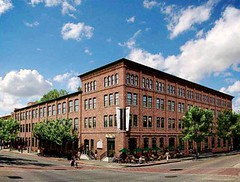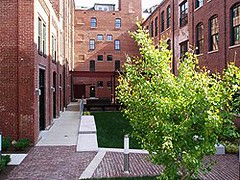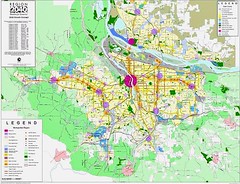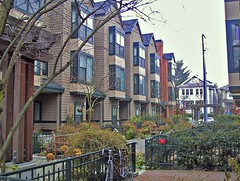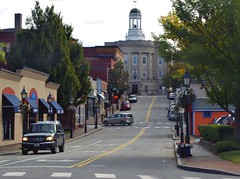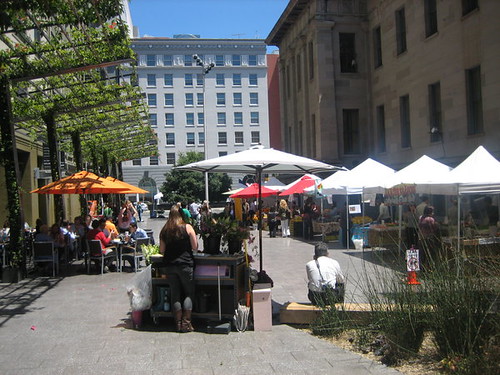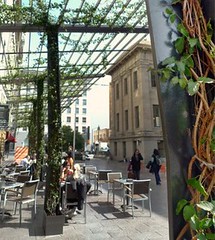EPA announces smart growth award winners: urban, rural & regional planning, plazas, green buildings, & more

Posted December 2, 2010 at 2:00PM
On December 1 the U.S. Environmental Protection Agency (EPA) honored five projects with the 2010 National Award for Smart Growth Achievement for their comprehensive approach to improving quality of life. “The projects make cities safer and more pleasant for pedestrians and bicyclists, manage growth to ensure long-term prosperity and health, and revitalize existing neighborhoods to provide new opportunities,” said the agency in a press release.
This year’s award winners are in five different categories, as follows:
- Overall Excellence: Smart.Growth@NYC, New York, New York
PlaNYC 2030, New York City’s blueprint for planning future growth, provided the inspiration for multi-agency coordination on innovative policies and projects to improve the quality of life in the city. PlaNYC prepares for more population while adding small public spaces throughout the city, improving air and water quality, and improving public health with better access to fresh food and more options for walking and biking.
PlaNYC includes 127 policy goals to create a greener, greater New York—a city with more affordable housing and open space, reduced traffic congestion, and improved air and water quality. Smart.Growth@NYC refers to four initiatives that grew out of PlaNYC: the Street Design Manual, the Active Design Guidelines, the Food Retail Expansion to Support Health program, and the Bicycle Parking Amendment. I praised the Street Design Manual for its thorough endorsement of complete, green streets when it was first released.
- Smart Growth and Green Building: Miller’s Court, Baltimore, Maryland
Miller’s Court, a renovated tin can factory, offers new housing and commercial space in the center of a neighborhood that is gaining new life as a thriving, convenient urban setting. The project has spurred new economic activity nearby, from a small boutique bakery to a 200,000-square-foot retail and office development.
There’s a lot to like about Miller’s Court, not least that it combines the urbanism of smart growth with historic preservation and green building. Readers would be surprised how seldom all three of those basic concepts are joined in a single project. According to EPA’s detailed description (of all the winners), Miller’s Court was also planned and designed to intentionally build community. Under an inclusionary housing program program, the developer received financial support in exchange for making a portion of the housing affordable to moderate-income residents, including some marketed to teachers new to the city.
- Policies, Programs, and Regulations: 2040 Growth Concept, Portland Metro, Oregon
Metro, the elected regional government of the Portland, Oregon, area, is making sure that future population growth can be accommodated through its “Making the Greatest Place” effort. Building on the 2040 Growth Concept, this effort helps protect current and future residents’ quality of life by providing access to transportation choices, investing in compact communities, and preserving farms and forests.
The concept accommodates an expected 600,000 additional residents as much as possible within existing urban areas, anticipating that the region's urban growth boundary will be expanded only when necessary. It calls for maintaining connections with nature, preserving existing neighborhoods, strengthening employment and industrial areas, and concentrating growth in designated centers. Over 90 percent of the region’s residents live within half a mile of transit, and the average Portland resident drives four fewer miles per day than residents of other comparable U.S cities.
- Rural Smart Growth: The Gateway 1 Corridor Action Plan, Maine
Like green building, the needs of rural areas have sometimes been neglected in the smart growth agenda. The Gateway 1 Corridor Action Plan covers a 100-mile stretch of Maine’s central coast along U.S. Route 1, from Brunswick to Stockton Springs. The collective effort by 20 towns to protect rural and scenic resources is a noteworthy achievement to preserve the environment and strengthen the economy along this regionally significant corridor.
In particular, Route 1 in Maine includes classic New England small towns along with bucolic stretches of rural land. Citizens care deeply about preserving both in the face of mounting traffic and associated sprawling development. In response, the citizen-driven action plan is projected to reduce traffic congestion, establish public transportation as a viable option along the corridor, reduce commercial strip development, and cut the loss of rural lands and habitat by a quarter over 30 years while conserving almost all of the most important scenic views. It also accommodates a 30 percent increase in local jobs and prioritizes the need to enable workers to live near their jobs.
- Civic Places: Mint Plaza, San Francisco, California
Mint Plaza, in downtown San Francisco, is a formerly dilapidated city-owned alley That has been converted into a public plaza and festival space that boasts an innovative green infrastructure system for managing stormwater. The project’s contemporary design respects its historic context while also providing a flexible public space for the surrounding neighborhood that brings people together.
Since its completion in 2008, Mint Plaza has become a model of adaptive public space design that now supports various public gatherings–from a weekly farmers’ market to a seasonal “People in Plazas” event with free music and dance performances–and enhances the neighborhood’s public image. The plaza’s shifting surfaces direct rainwater into treatment gardens and an underground infiltration basin, reducing runoff and helping to protect San Francisco Bay. This is the first instance of fully integrating green infrastructure at this scale in a San Francisco public open space.
EPA created the National Award for Smart Growth Achievement in 2002 to recognize exceptional approaches to development that protect the environment, foster economic vitality, and enhance quality of life. The agency’s Smart Growth Program helps America’s communities turn their visions of the future into reality through research, tools, partnerships, case studies, grants, and technical assistance. The office has long been at the forefront of advancing pragmatic, inclusive approaches to smarter, more sustainable neighborhoods and communities, and we are really fortunate to have them.
To read much more about the awardees and see more photos, go here.
Move your cursor over the images for credit information.


